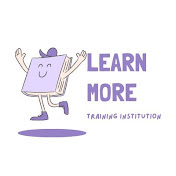SOFTWARE TESTING LIFE CYCLE ( STLC )
Test Plan - Test Scope, Test Environment, Different Test phase and Test Methodologies, Manual and Automation Testing, Defect Management, Configuration Management, Risk Management, Evaluation & identification – Test, Defect tracking tools, test schedule, resource allocation.
Test Design - Traceability Matrix and Test coverage, Test Scenarios Identification & Test Case preparation, Test data and Test scripts preparation, Test case reviews and Approval, Base lining under Configuration Management.
Test Environment Setup - Test Bed installation and configuration, Network connectivity's, All the Software/ tools Installation and configuration, Coordination with Vendors and others.
Test Automation - Automation requirement identification, Tool Evaluation and Identification, Designing or identifying Framework and scripting, Script Integration, Review and Approval, Base lining under Configuration Management.
Test Execution and Defect Tracking - Executing Test cases, Testing Test Scripts, Capture, review and analyze Test Results, Raise the defects and tracking for its closure.
Test Reports and Acceptance (Test Closure)- Test summary reports, Test Metrics and process Improvements made, Build release, Receiving acceptance.
Software Testing Life Cycle
STLC is process to test an application/ product and ensure the quality standards are met.
This process will go through flow until the software meets its standards.
6 phases in STLC:
1.Requirement Analysis:
Requirement are given by clients or BA’s.
Requirement documents may be in Word or Excel.
It is primary stage in STLC. The tester need to understand the requirement based on the given documents.
Software requirement is a Functional (Validating a software with given set of needs) and Non- Functional Requirements (It is like an appearance of an application, checking performance of an application).
Basically we do Static Testing (To analyzing the fixed set of data with requirement).
Test Planning:
It is detailed document prepared by TL/ Test Manager for external reference. The Document include following items,
i Types of Testing (what are types of testing is to be carried out in this part)
ii Testing Tools (Which tools we are going to use in this particular sprint Eg. Selenium, Postman, API)
iii Roles & Responsibilities (Resource planning)
iv Estimated Timeline (How long will take it to complete this sprint).
These document are presented in front of client or BA’s. To clarify any modification is to be done in this particular part.
Test Strategy:
While preparing Test Planning document we will be start preparing Test Strategy Document for the internal reference. It also made by TL or Test manager.
Test Schedule
Scope
Testing methodology(Waterfall/ Agile)
Testing tools.
Risk Analysis(Basic details of this application where previous tested by any other QA’s in our organization, What are all the risk they undergo during the process and analyze the structure of it)
Review and Approval (Once testing is done from whom have to get approval and move to next stage).
2 . Resource planning:
How we are going to utilize our QA’s in each part of sprint.
Example:
Sprint 1 – 1 QA for manual, 2 QA for automation.
Sprint 2- 3 QA for manual, 1 QA for automation.
3. Test Design:
In this phase, Test design technique is procedure to determining test based on condition. Based on given scope and Criteria test case are prepared.
We have Test Scenario, it is high level functionality
E.g.: Validate Gmail sign in page.
Test cases are derived from Test scenarios. We have multiple steps to validate test scenario.
E.g.:
Verify whether user can able to enter username in Alphabets, number and special characters.
verify whether user can able to enter password in Alphabets, number and special characters.
User can able to enter valid username and password.
User can able to enter login page.
4. Test Environmental Phase:
In this phase, we will validate test case in different URL setup (sys, sit, qa, qa1) given by developer. We cannot able to directly in production URL (www). It will impact on application.
Eg:
Sys.gmail.com
Qa.gmail.com
5. Test Execution:
Once test design and Environmental is setup, we will validate application from derived test case. Comparing Actual result with expected result.
Executes test case Compare expected result with actual result Pass/ fail.
If it Fail Report bug to developer
This process will undergo until, it meets acceptance criteria.
6. Test Closure Phase:
Preparing Report related to testing.



0 Comments